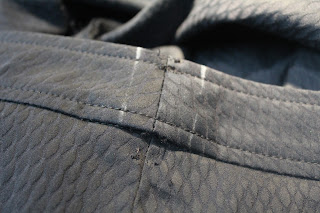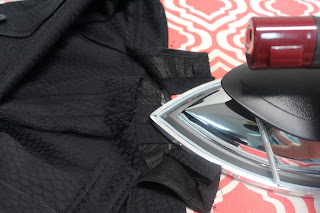There are so many things a tailor can do that would surprise you. From customers I often get the response, "you can do that??" --It makes me smile every time. When I acquire a new customer, they are either skeptical of what can be done or not done because they've gotten their work done poorly somewhere else. So I thought I'd let you guys in on a little secret--EVERYTHING can be altered. It's usually a matter of skill, and opportunity cost. A great tailor knows when something will cost them more time then it's worth investing in. And they should tell you that up front. Some things are just not worth the time needed to put into them. Especially if they are an outdated style, or poor quality garment to begin with. When I look at a garment I evaluate right away whether or not it is worth my customers money investing in it. If it is a major cost, will that style also carry over to the next season? How much wear will they really get out of it? All of these things I think about and evaluate when I meet and fit my customers. And they should also be things YOU think about before you get your clothes altered.
Here are a few things you wouldn't have guessed your tailor could do.
1. Shortening a sleeve from the shoulder.
If you've ever had a jacket that has an unusual or detailed sleeve cuff you probably thought it couldn't be shortened. If the detail is too much for me to remove and re-apply, I can simply shorten the sleeve from the shoulder. I have had several women's wear jackets that had intense beading at the cuff, like this--
IF that is the case I would shorten from the shoulder. Also, for men's wear, it has become trendy to have working button holes in the sleeve vent. (That means the button holes are cut) If this is the case and you really like that detail, I would shorten from the shoulder.
Keep that in mind when you are looking and shopping from Fall. Also, many tailors do not do this, so if you don't live in the Cincinnati area, make sure you ask your tailor if they can do this before purchasing a jacket with this issue.
2. Vintage Garments
Say you see a vintage garment that you love but has a few rips here and there. I have often fixed vintage garments by replacing panels here and there where there was either a moth hole or tear that couldn't be repaired. This of course is easier when the garment is a solid color and fabric can be easily matched. Plaid's for example get tricky. If you see a vintage garment you just love, ask your tailor if things can be fixed on it, it may just become a staple piece in your closet! If the garment is too damaged, it can ALWAYS be used as a pattern and recreated to make you a brand new version of your vintage garment!
The number one question I get asked is if denim can be altered. Of course it can! There is nothing that can't be done with your old, new or vintage denim. If you want and original hem, say for a distressed bottom, it can simply be removed and sew back into its correct length. The waist can also be altered, and should be taken in through the CB seam. If you've had your waist altered and the tailor or seamstress puts darts in in, you know it doesn't look that great. If you are getting the waist altered, ask them to go through the CB seam. If you want to completely change the look of your denim but altering the leg shape all together, that can also be done. Just ask!
4. Dresses with low backs and the bra drama!
I've seen more low back dresses in the past year than I ever have before. Its definitely a style that I don't see going out for a while and will carry over for several more years. So whats a girl to do when she can't wear a bra half the time? For ladies with a smaller chest, going without a bra is no big deal and doesn't really cause many issues. For ladies that have a larger bust, this style is basically a no no. Depending on the dress, there are a few things that can be done. The most easy and basic way to achieve this look is by adding bra cups to the dress. Now these will not give you much in the way of support, but they will definitely help the look of the garment, and you won't have to worry about seeing to much of anything that shouldn't been seen! eek. This is a great alteration for anyone with a B-C size bust. However, bra cups won't always work in every garment and my best suggestion for wearing these styles is to purchase an adhesive bra. There are tons of different brands out there that sell these, but my favorite are VS. They run about 65 dollars and will last you hundreds of wears before you replace them. They take a little bit of getting used to, and you will have to mess around with them a bit to figure out exactly how to work them but believe me the purchase is worth it! They give a slight lift and support, and feel like you aren't wearing anything at all.
5. Zippers
A zipper can be added to pretty much anything. If you are having trouble getting in and out of a garment, ask your tailor to add a zipper to it. This of course takes a little extra fabric in the seams, so ask your tailor what can be done. Zipper replacement is something all tailors should do, but sometimes you can also just change the head or pull of a zipper as a cheaper fix. Often times the zipper head gets warped from the pulling up and down but the teeth of the zipper tail remain in tack. Do you have a pair of pants that need shortened but they have zippers at the hem? Don't fear, the zippers can either be shortened, or moved up! They aren't as scary as you'd think!
If you have any questions on tailoring & styling or are interested in getting things altered, please contact me via email: Krieger.jill@gmail.com, or visit my website for details on my prices and location. www.jillianclaricetailoring.com






















































